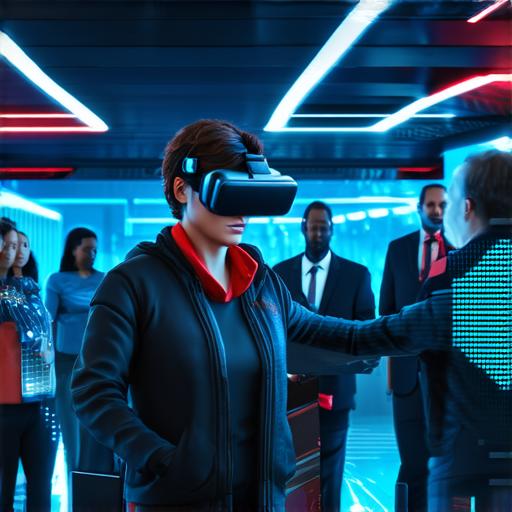
Introduction
AR, VR, and MR are all forms of immersive technology that allow users to interact with digital content in new and exciting ways. While they share some similarities, they also have distinct differences that set them apart. In this article, we will examine the key features and characteristics of each technology, as well as real-world examples of how they are being used.
Augmented Reality (AR)
AR is a technology that overlays digital content onto the real world, allowing users to see and interact with both physical and virtual objects in the same space. This can be achieved through the use of smartphones, tablets, or specialized AR glasses.
One of the key features of AR is its ability to enhance the user’s experience of the physical world. For example, a user might use an AR app to see a 3D model of a piece of furniture in their home before buying it, or to see additional information about a historical site while visiting.
Another advantage of AR is its flexibility and adaptability. Because AR can be accessed through a variety of devices, it has the potential to reach a wide audience, including those who may not have access to specialized VR equipment. Additionally, AR content can be easily updated or changed, making it an ideal solution for businesses that want to keep their customers engaged with dynamic and interactive experiences.
Virtual Reality (VR)
VR is a technology that completely immerses the user in a virtual world, creating a fully artificial environment that they can interact with using specialized VR headsets or gloves. Unlike AR, VR does not overlay digital content onto the real world, but instead creates an entirely new reality for the user to explore.
One of the key advantages of VR is its ability to provide a truly immersive experience. Users are fully engaged in the virtual world, and can interact with it in ways that would be impossible in the real world. This makes VR an ideal solution for training simulations, gaming, and other applications where a high level of immersion is required.
Another advantage of VR is its ability to create highly realistic and detailed environments. Because VR creates an entirely new reality, it can be designed and customized to meet the specific needs of a particular application or business. This makes VR a powerful tool for industries such as architecture, engineering, and design, where visualization and collaboration are critical.
Mixed Reality (MR)
MR is a technology that combines elements of AR and VR to create a hybrid experience that blends digital content with the real world in varying degrees. MR can be achieved through the use of specialized glasses or headsets that are capable of tracking both the physical environment and the user’s movements.
One of the key advantages of MR is its ability to provide a more natural and intuitive interface for users. Because it blends digital content with the real world, MR can be used in a variety of settings and applications without requiring the user to wear specialized equipment or leave their physical surroundings. This makes MR an ideal solution for industries such as healthcare, where users need to interact with digital content in a way that feels natural and intuitive.
Another advantage of MR is its flexibility and adaptability. Because it can be used in a variety of settings and applications, MR has the potential to reach a wide audience, including those who may not have access to specialized VR or AR equipment. Additionally, MR content can be easily updated or changed, making it an ideal solution for businesses that want to keep their customers engaged with dynamic and interactive experiences.
